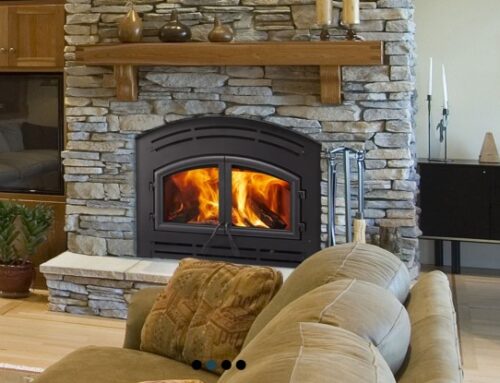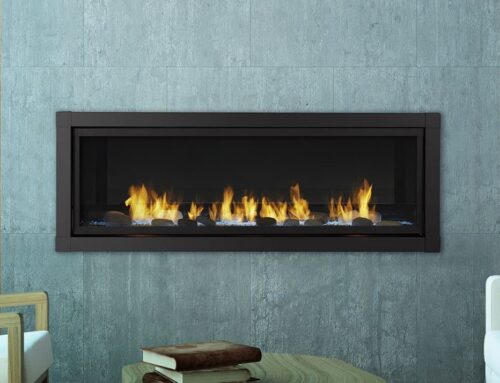What’s the Difference Between Vent Free and Direct Vent Gas Fireplaces?
There are 2 types of fireplaces on the market Vent Free (Unvented) and Direct vent.
Both systems use either a Millivolt (standing pilot) or IPI (electronic ignition with no standing pilot which is more efficient).
A Vent-Free system uses room air for combustion and delivers 99.9% of the available heat energy directly to the room. Vent-Free systems have an unmatched safety record, thanks in part to their clean-burning technology and their Oxygen Depletion Sensor, which instantly shuts off the valve if oxygen in the room drops to and unsafe level. Because no venting is required, Vent-Free systems offer more installation options.
Vent-Free systems are limited to 40,000 Btu and must be operated as supplemental heating sources in conjunction with a central furnace that circulates air.
Advantages:
- Unmatched efficiency – 99.9%
- Offers the most installation versatility
- Usually less expensive to buy and to install
- Can operate with a remote or thermostat
- Most systems can provide live-saving heat during a winter power outage
- Choose fireplace, insert, heater, cast iron stove, burner and log set, or contemporary burner
A Direct-Vent system uses two vent pipes. One draws air in from outdoors to support combustion. The other exhausts the by-products of combustion to the outside. The two vent pipes may be concentric (exhaust pipe within a larger diameter intake pipe) or co-linear (separate pipes of about the same size).
Combustion takes place inside a sealed chamber – with a glass front in the case of a fireplace. Room air circulates around the combustion chamber, often assisted by a blower, to heat the room.
A DV system is often installed along an outside wall to simplify the vent run, but can also be installed elsewhere in the home and vented through the roof.
Advantages:
- Good efficiency – 60 to 80%
- Good heat output with thermal transfer through the glass and air circulation
- Separates room air from combustion air
- May be used as primary heat source
- Can operate with a remote or thermostat
- Most systems can provide life-saving heat during a winter power outage
- Choose fireplace, insert, cast iron stove, or heater












Leave A Comment
You must be logged in to post a comment.